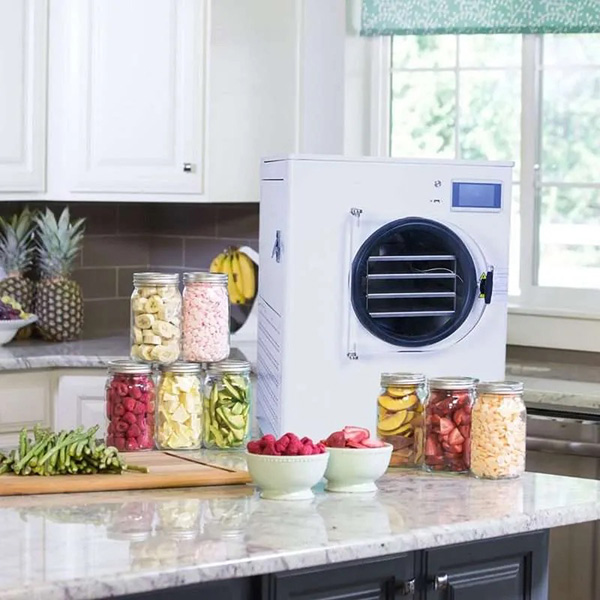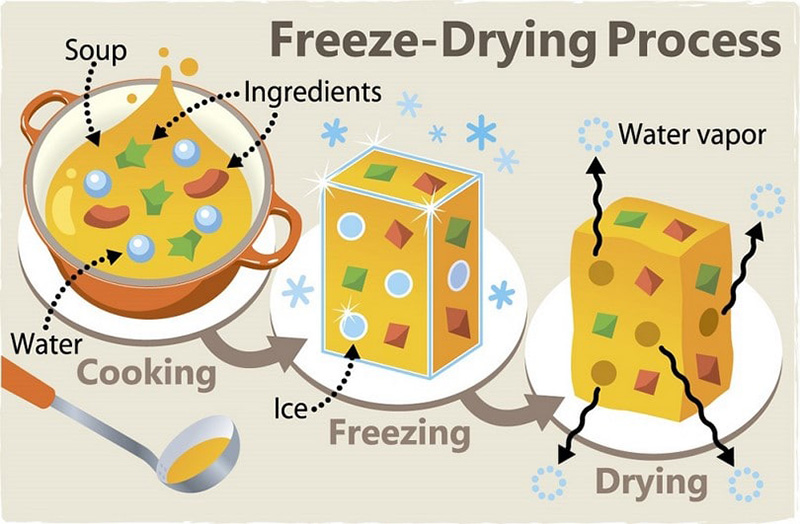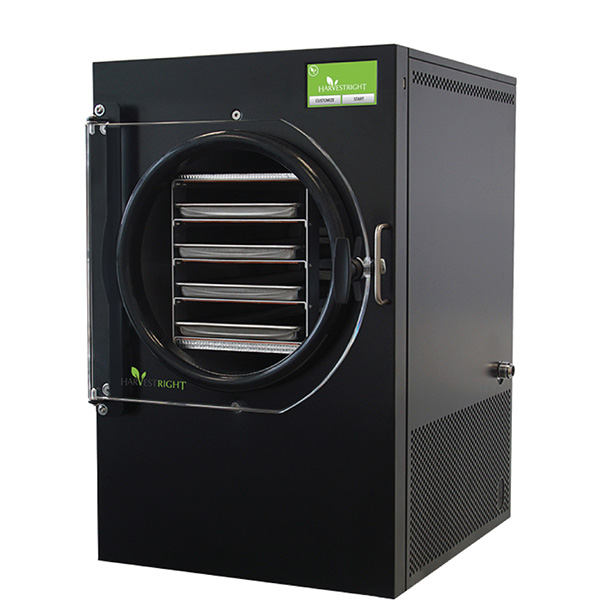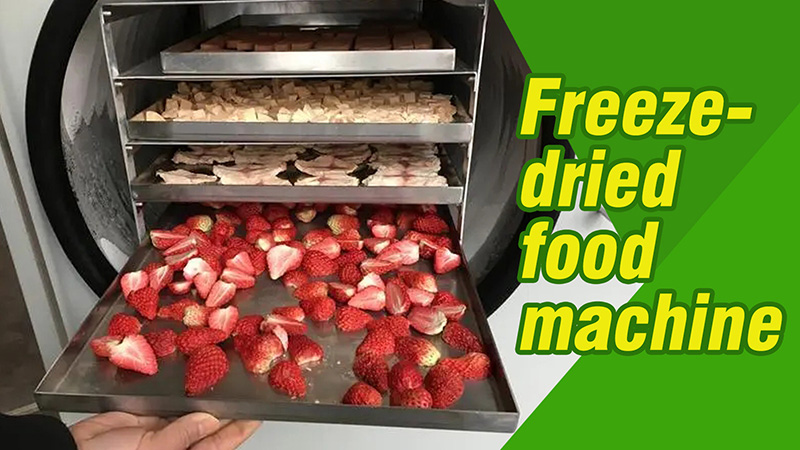
Content Menu
● Introduction to Freeze Drying
● Understanding the Freeze Drying Process
● The Rise of Home Freeze Dryers
>> Benefits of Owning a Home Freeze Dryer
● Freeze-Dried Food Preservation: A Game-Changer for Home Cooks
>> Freeze-Dried Fruits and Vegetables
● Freeze-Dried Meals: Convenience Meets Nutrition
● The Harvest Right Freeze Dryer: Leading the Home Freeze Drying Revolution
>> Key Features of Harvest Right Freeze Dryers
>> Getting Started with Your Home Freeze Dryer
● Comparing Freeze Drying to Other Food Preservation Methods
● The Economics of Home Freeze Drying
● Innovative Uses for Your Home Freeze Dryer
● The Future of Food Preservation: Freeze Drying Technology Advancements
● Conclusion: Embracing the Freeze Drying Revolution
● Frequently Asked Questions
>> 1. Q: How long does the freeze drying process take?
>> 2. Q: Can all types of food be freeze-dried?
>> 3. Q: How do I store freeze-dried foods?
>> 4. Q: Is freeze-dried food healthy?
>> 5. Q: How do I rehydrate freeze-dried food?
Introduction to Freeze Drying
Freeze drying, also known as lyophilization, is a cutting-edge food preservation method that has gained immense popularity among home enthusiasts and food industry professionals alike. This process involves removing moisture from food while preserving its nutritional value, flavor, and texture. At the heart of this innovative technology is the home freeze dryer, a remarkable appliance that brings commercial-grade preservation capabilities to your kitchen.
Understanding the Freeze Drying Process
The freeze drying process is a marvel of modern food science, consisting of three main stages:
1. Freezing: The food is rapidly frozen to temperatures below -40°F (-40°C), creating ice crystals within the food structure.
2. Primary Drying (Sublimation): The frozen food is placed under a vacuum, causing the ice to sublimate directly from a solid to a gas, bypassing the liquid phase.
3. Secondary Drying (Desorption): Any remaining moisture is removed through a process called desorption, leaving the food with minimal water content.
This intricate process results in food that retains up to 97% of its nutritional value while weighing only about 20% of its original weight. The absence of water also inhibits the growth of bacteria, yeast, and mold, making freeze-dried food shelf-stable for up to 25 years when properly packaged.
The Rise of Home Freeze Dryers
While freeze drying was once limited to large-scale industrial operations, companies like Harvest Right have revolutionized the industry by introducing home freeze dryers. These compact yet powerful machines bring the benefits of freeze drying to home kitchens, allowing individuals to preserve their own fruits, vegetables, meats, and even entire meals.
Benefits of Owning a Home Freeze Dryer
1. Long-term food storage: Preserve food for up to 25 years, creating a sustainable emergency food supply.
2. Retain nutritional value: Unlike other preservation methods, freeze drying maintains up to 97% of the food's original nutrients.
3. Preserve flavor and texture: Freeze-dried foods rehydrate to nearly their original state, maintaining taste and mouthfeel.
4. Reduce food waste: Preserve surplus garden produce or bulk purchases, minimizing spoilage.
5. Customize your food storage: Create your own freeze-dried meals tailored to your dietary preferences and restrictions.
Freeze-Dried Food Preservation: A Game-Changer for Home Cooks
Freeze-dried food preservation has transformed the way we think about food storage and emergency preparedness. Unlike traditional methods such as canning or dehydrating, freeze drying offers superior quality and versatility.
Freeze-Dried Fruits and Vegetables
Fruits and vegetables are among the most popular items to freeze dry at home. The process locks in the vibrant colors, flavors, and nutritional content of fresh produce, creating lightweight, crispy snacks that can be enjoyed as-is or rehydrated for use in cooking.Some popular freeze-dried fruits and vegetables include:
- Strawberries
- Bananas
- Apples
- Blueberries
- Raspberries
- Corn
- Peas
- Carrots
- Bell peppers
- Onions
These freeze-dried ingredients can be used in a variety of ways, from adding to cereals and baked goods to reconstituting for use in soups, stews, and smoothies.
Freeze-Dried Meals: Convenience Meets Nutrition
One of the most exciting applications of home freeze dryers is the ability to preserve entire meals. This capability is particularly valuable for outdoor enthusiasts, emergency preparedness, and busy families looking for quick, nutritious meal options.Examples of freeze-dried meals include:
1. Pasta dishes
2. Soups and stews
3. Casseroles
4. Rice-based meals
5. Breakfast scrambles
By freeze drying complete meals, you can ensure that you always have access to home-cooked food, even when time or resources are limited.

The Harvest Right Freeze Dryer: Leading the Home Freeze Drying Revolution
When it comes to home freeze dryers, Harvest Right has established itself as a market leader. Their range of freeze dryers caters to various needs and capacities, from small families to large-scale operations.
Key Features of Harvest Right Freeze Dryers
1. Multiple sizes available: Small, medium, and large options to suit different household needs
2. User-friendly interface: Simple controls make the freeze drying process accessible to beginners
3. Stainless steel construction: Durable and easy to clean
4. Customizable cycles: Adjust settings for different types of food
5. Quiet operation: Designed to run without disrupting your home environment
Getting Started with Your Home Freeze Dryer
Using a home freeze dryer like the Harvest Right model is surprisingly straightforward. Here's a basic overview of the process:
1. Prepare your food: Clean, slice, or pre-cook items as needed.
2. Arrange on trays: Spread food evenly on the provided trays.
3. Load the freeze dryer: Place trays in the machine and close the door.
4. Start the cycle: Select the appropriate settings and begin the freeze drying process.
5. Wait for completion: The process typically takes 20-40 hours, depending on the food and quantity.
6. Package and store: Once complete, package the freeze-dried food in airtight containers or mylar bags with oxygen absorbers.
Comparing Freeze Drying to Other Food Preservation Methods
While freeze drying offers numerous advantages, it's essential to understand how it compares to other food preservation techniques:
1. Canning: Requires heat, which can degrade nutrients and alter flavors. Shelf life is typically 1-5 years.
2. Dehydrating: Removes moisture but can affect texture and nutrient content. Shelf life is usually 1-2 years.
3. Freezing: Preserves nutrients but requires constant electricity and has a shorter shelf life of 6-12 months.
Freeze drying, in contrast, offers the longest shelf life, best nutrient retention, and most versatile end product among these methods.

The Economics of Home Freeze Drying
While the initial investment in a home freeze dryer can be significant, many users find that the long-term savings and benefits outweigh the upfront costs. Factors to consider include:
1. Reduced food waste
2. Savings on long-term food storage
3. Ability to buy in bulk and preserve
4. Potential for small business opportunities (selling freeze-dried products)
Innovative Uses for Your Home Freeze Dryer
Beyond basic food preservation, creative home users have found numerous innovative applications for their freeze dryers:
1. Preserving herbs and spices
2. Creating lightweight camping meals
3. Making pet treats
4. Preserving flowers and other botanicals
5. Crafting unique art supplies
The Future of Food Preservation: Freeze Drying Technology Advancements
As freeze drying technology continues to evolve, we can expect to see advancements in several areas:
1. Increased energy efficiency
2. Faster processing times
3. Enhanced automation and smart features
4. More compact and affordable units
5. Integration with other kitchen appliances
These developments will likely make home freeze drying even more accessible and popular in the coming years.
Conclusion: Embracing the Freeze Drying Revolution
The advent of home freeze dryers has ushered in a new era of food preservation, empowering individuals to take control of their long-term food storage and emergency preparedness. With its ability to maintain nutritional value, flavor, and texture while offering unparalleled shelf life, freeze drying stands out as a superior method of food preservation.
As more people discover the benefits of owning a home freeze dryer, we can expect to see a continued shift in how we approach food storage, meal preparation, and even small-scale food production. Whether you're an avid gardener looking to preserve your harvest, an outdoor enthusiast in need of lightweight meals, or simply someone who values having a reliable emergency food supply, a home freeze dryer offers a versatile and effective solution.
By embracing this technology, we not only enhance our own food security but also contribute to a more sustainable future by reducing food waste and promoting self-sufficiency. As the freeze drying revolution continues to gain momentum, it's clear that this innovative approach to food preservation will play an increasingly important role in kitchens around the world.

Frequently Asked Questions
1. Q: How long does the freeze drying process take?
A: The freeze drying process typically takes between 20 to 40 hours, depending on the type and quantity of food being processed. Factors such as water content, thickness of the food, and the specific model of freeze dryer can affect the duration.
2. Q: Can all types of food be freeze-dried?
A: Most foods can be freeze-dried, including fruits, vegetables, meats, dairy products, and even complete meals. However, foods with high fat content may not freeze-dry as well and may have a shorter shelf life.
3. Q: How do I store freeze-dried foods?
A: Freeze-dried foods should be stored in airtight containers or mylar bags with oxygen absorbers. When properly packaged and stored in a cool, dry place, freeze-dried foods can last up to 25 years.
4. Q: Is freeze-dried food healthy?
A: Yes, freeze-dried food retains up to 97% of its original nutritional value. The process preserves vitamins, minerals, and enzymes better than other preservation methods.
5. Q: How do I rehydrate freeze-dried food?
A: To rehydrate freeze-dried food, simply add water. The amount of water and time needed will vary depending on the food item. Generally, it takes about 5-10 minutes for most foods to fully rehydrate.












